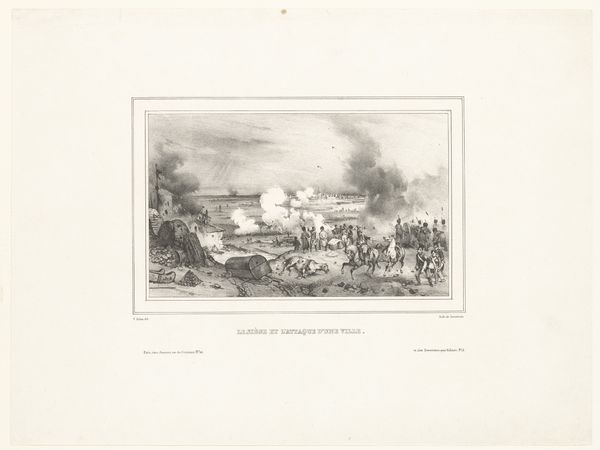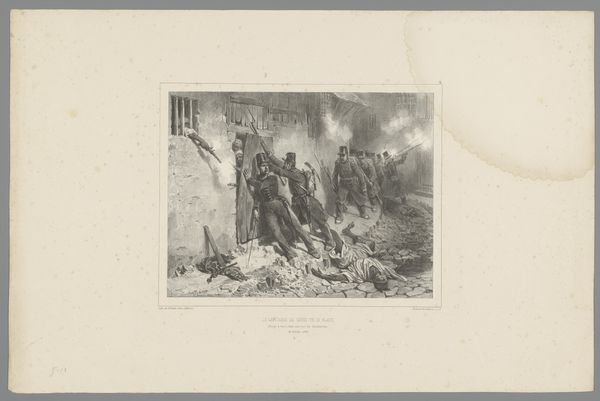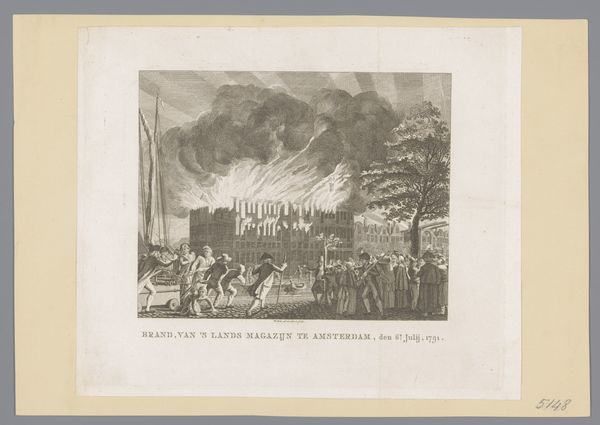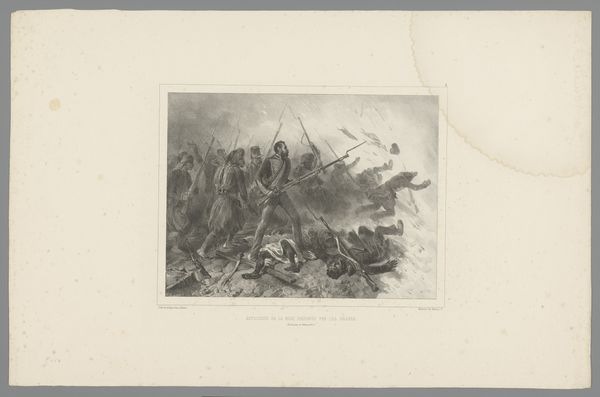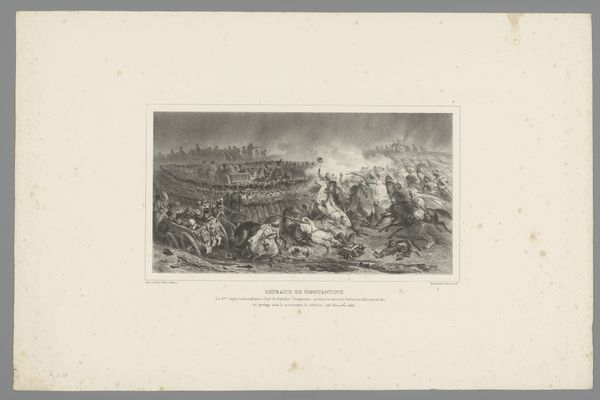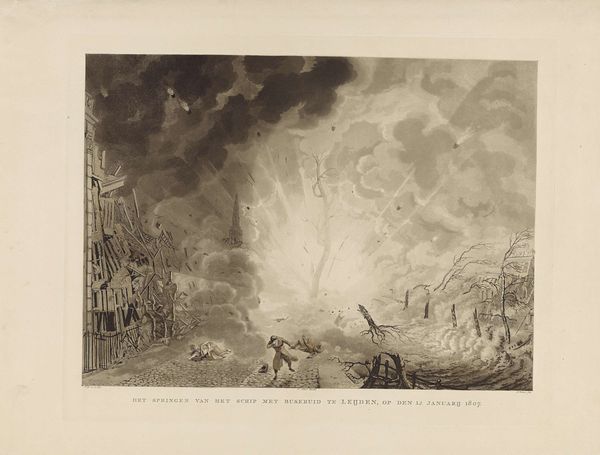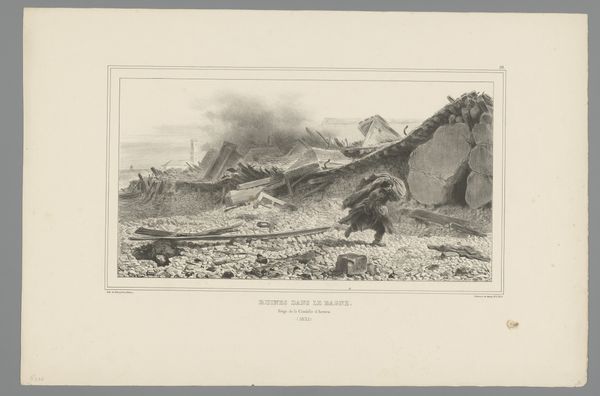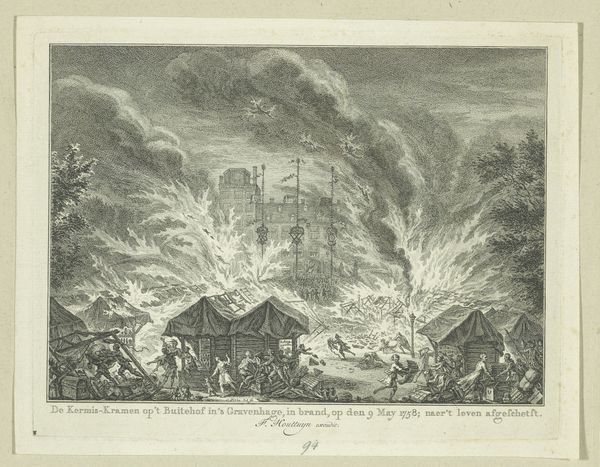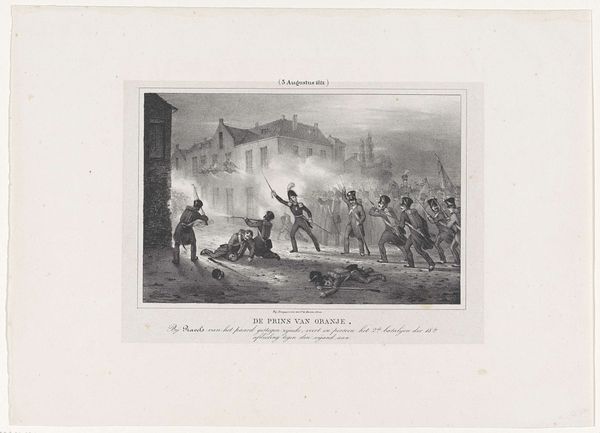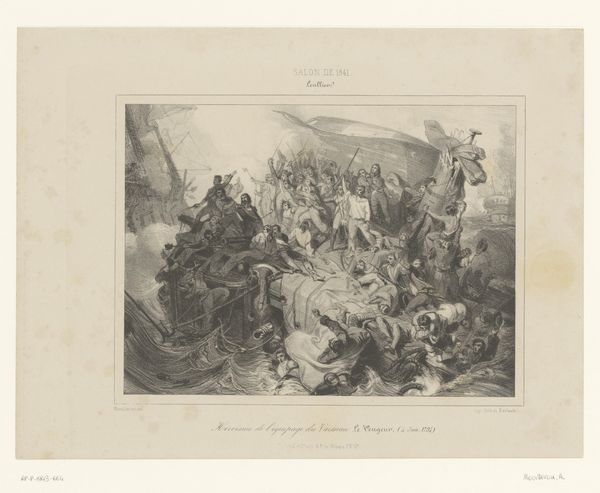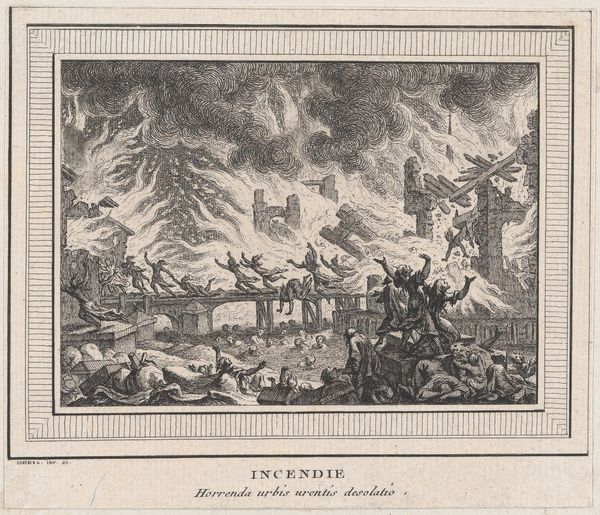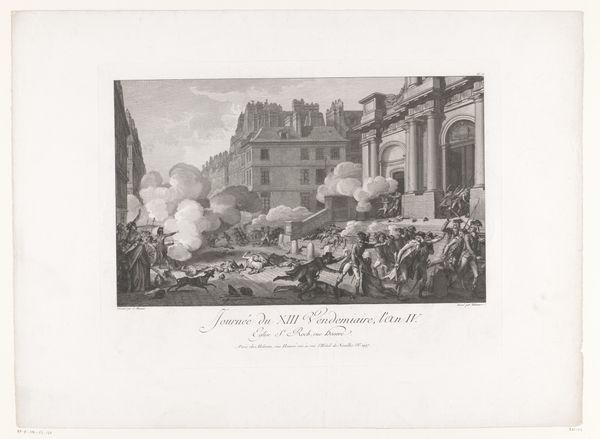
print, paper, engraving
# print
#
old engraving style
#
paper
#
line
#
cityscape
#
history-painting
#
engraving
#
realism
Dimensions: height 134 mm, width 150 mm
Copyright: Rijks Museum: Open Domain
Editor: Here we have François Louis Couché's "Storming of the Tuileries," an engraving on paper, dated somewhere between 1792 and 1849. There’s such a density of detail, of bodies and smoke. What can you tell me about this work? Curator: Consider the production of this image, a relatively mass-produced print, depicting the ultimate destruction of aristocratic power. The act of making prints like this, rapidly disseminated throughout the populace, played a crucial role in shaping revolutionary fervor and the experience of it. Think of the artist's labor, painstakingly rendering such intricate detail, then reproduced for wide consumption. Editor: That's a good point about it being a print, that really democratizes the image. But what about the artistic intention behind such a rendering of violence? Curator: Perhaps Couché's intention is less about high artistic expression, and more about recording and disseminating a specific narrative. Note how the printing process allows for this scene, a chaotic clash, to be distributed, consumed, and even digested on an individual level. It’s almost propaganda using mass production. What impact would viewing and owning these images have on people's revolutionary engagement? Editor: I never thought about it like that. Thinking of it as a piece of material culture, as a sort of consumable propaganda, is pretty compelling. Curator: Exactly! How do we consume art, but more important, how did past societies consume art, and what impact did that have? Food for thought. Editor: I’ll certainly be chewing on that for a while! Thanks.
Comments
No comments
Be the first to comment and join the conversation on the ultimate creative platform.
